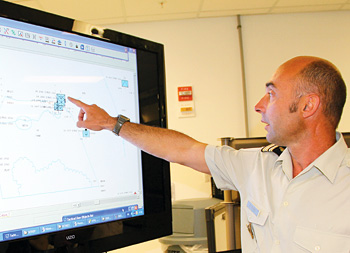INDIAN ARMED FORCES CHIEFS ON OUR RELENTLESS AND FOCUSED PUBLISHING EFFORTS

The insightful articles, inspiring narrations and analytical perspectives presented by the Editorial Team, establish an alluring connect with the reader. My compliments and best wishes to SP Guide Publications.

"Over the past 60 years, the growth of SP Guide Publications has mirrored the rising stature of Indian Navy. Its well-researched and informative magazines on Defence and Aerospace sector have served to shape an educated opinion of our military personnel, policy makers and the public alike. I wish SP's Publication team continued success, fair winds and following seas in all future endeavour!"

Since, its inception in 1964, SP Guide Publications has consistently demonstrated commitment to high-quality journalism in the aerospace and defence sectors, earning a well-deserved reputation as Asia's largest media house in this domain. I wish SP Guide Publications continued success in its pursuit of excellence.
- Appointments Committee of Cabinet approves one-month extension in service of Chief of the Army Staff
- Admiral Dinesh K. Tripathi assumes Command of the Indian Navy as 26th Chief of the Naval Staff
- Prime Minister witnesses 'Bharat Shakti' – a Tri-Services Firing and Manoeuvre Exercise in Pokhran, Rajasthan
- Interim Defence Budget 2024-25 — An Analysis
- Union Defence budget 2024
- Prime Minister Modi Commemorates Indian Navy Day in a Grand Ceremony
US Army evaluates net-centric interoperability for Coalition Ground Forces

The US Army hosted a coalition interoperability experiment to identify performance shortfalls and to evaluate future network architectures that will better enable interoperability for coalition ground forces brigade and below, prevent fratricide and extend continuity of operations, recently.
The US Army Research, Development and Engineering Command’s communications-electronics RD&E Center, or CERDEC, provided experimentation and interoperability support to Project Manager Mission Command to validate the interoperability of the National Command & Control Information System and to produce a roadmap with capacities, performance assessments and recommendations for future systems.
The experiment was conducted under the 5-Powers Net-Centric Agreement among England, France, Germany, Italy and the United States, which concludes this year.
“Soldiers need to accurately pass friendly force information to coalition partners for mission execution, but there are challenges to receiving the same pieces of data through different methodologies in a net-centric environment,” said Kenneth Grippo, Cognition Branch chief for CERDEC’s Command, Power & Integration directorate.
The experiment will aid in identifying interoperability gaps and whether those gaps are due to specifications, national implementation or the technology itself. The results will be used to maximise situational awareness, to understand and utilise coalition resources, to avoid duplication of coalition efforts and to increase flexibility of functionality, Grippo noted.





